By Doresa Banning

Governor Fred Balzar
Gambling has been a part of Nevada’s history since before it even became a territory. As miners flocked into the area, they brought their games of chance to pass the time. Attempts to ban, penalize, and regulate gambling were made beginning in 1861, but regardless of the laws, gaming existed in many forms.
Finally in 1931, as Nevada faced the Great Depression, Governor Fred Balzar signed a bill making gambling legal in the state. The hope was the new law would generate much-needed revenue for Nevada in the form of taxes and licensing fees.
The days of nickel slots paying out drinks and cigars and illicit back-alley poker games were over, and gaming quickly became one of the state’s most important industries. Since that time, the core of industry—the games—has changed, led by technology and followed closely by the desire for bigger payouts, and more entertaining options.
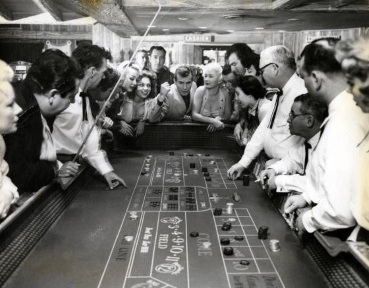
Craps at the El Rancho in Las Vegas
Table Games Lead the Way
For half a century following gaming’s legalization, table games generated the most revenue for the Silver State’s casinos. Many games evolved slowly but the waning interest of gamblers led to the demise of some. For instance, faro was the hottest card game in mining towns such as Virginia City since the early 1880s, but by 1950 people no longer wanted to take the time to learn the game’s intricacies and it eventually faded.

Chuck-a-luck cage
The dice game chuck-a-luck is nearly, if not already, dead. Chemin de fer, an early form of the card game baccarat, also disappeared in the 1950s when it was replaced by a new version of the game, punto banco.
Table games continue to evolve, becoming “more challenging, more skillful, and more complex in their designs,” according to Michael Shackleford, a Las Vegas-based professional gambling consultant and writer known as the Wizard of Odds.
A major shift with games such as poker, baccarat, and blackjack was the invention of the card-shuffling machine in the 1990s. It allowed for more hands to be dealt per hour and an overall faster pace, thereby increasing profitability for gambling establishments. As for craps, minimal changes were made to the game until the 2010s, when special side bets with big payouts were added.
Taking the place of some traditional table games today are electronic versions with a virtual dealer who appears on a screen or no dealer at all. These options are less intimidating for newbies, let people play at their own pace, and offer guidance on how to play.
“Casinos might not have very many live dealers in the not so distant future,” says Sharon Nickson Cox, executive casino host at Reno’s Silver Legacy Resort Casino.
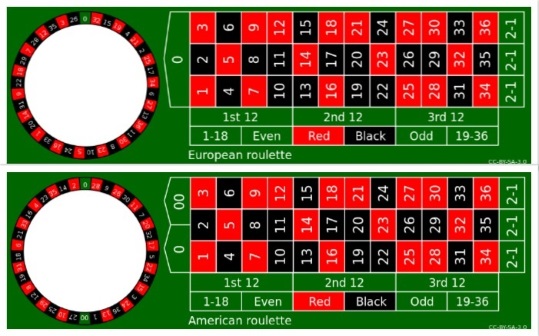
European v. American layout
Roulette “has been pretty stagnant for a long time,” Michael notes, but there’s Organic Roulette now, which is electromechanical and dealer-less. It has a wheel and the wagers of a live game but bets are placed through a touchscreen display. Virtual Roulette—by Nevada’s Aruze Gaming America Inc.—is similar but allows players to shoot the ball and features a progressive jackpot side game. Single-zero roulette remains the standard although last year The Venetian in Las Vegas released a triple-zero roulette game, which seems to be more popular than the double-zero versions.
“It just goes to show you that most players don’t really care what the rules are to a game,” Michael says. “They’re more concerned that the limits are within their comfort zone.”
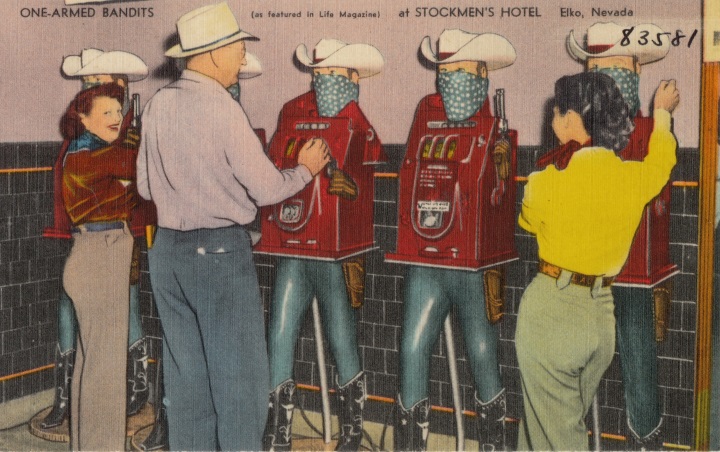
One-armed bandits
Spinning Wheels to Video Screens
Early three-reel mechanical “one-armed bandits” accepted a top bet of just $1 with a maximum payout of $25, and their motifs—fruit, pots of gold, etc.—were generic. They also had to be played standing up because gaming houses originally didn’t provide chairs. Eventually advances in technology meant slot machines began to rule the casino floor, taking over the dominance of table games.
A major advancement in the 1970s was the shift to a video screen display from the window view of reels spinning. Another was the addition of $5, $10, and $20 bill acceptors to slots. Then ticket-in ticket-out technology was introduced, which eliminated the use of money in the machines altogether.
The advent of progressives in the 1980s heralded a big change for both slots and table games. Progressive jackpots grow by a percentage with each coin played until the money is won, and while they were originally limited to poker and slots, progressives are now often tied into other games such as blackjack, roulette, and pai gow poker.
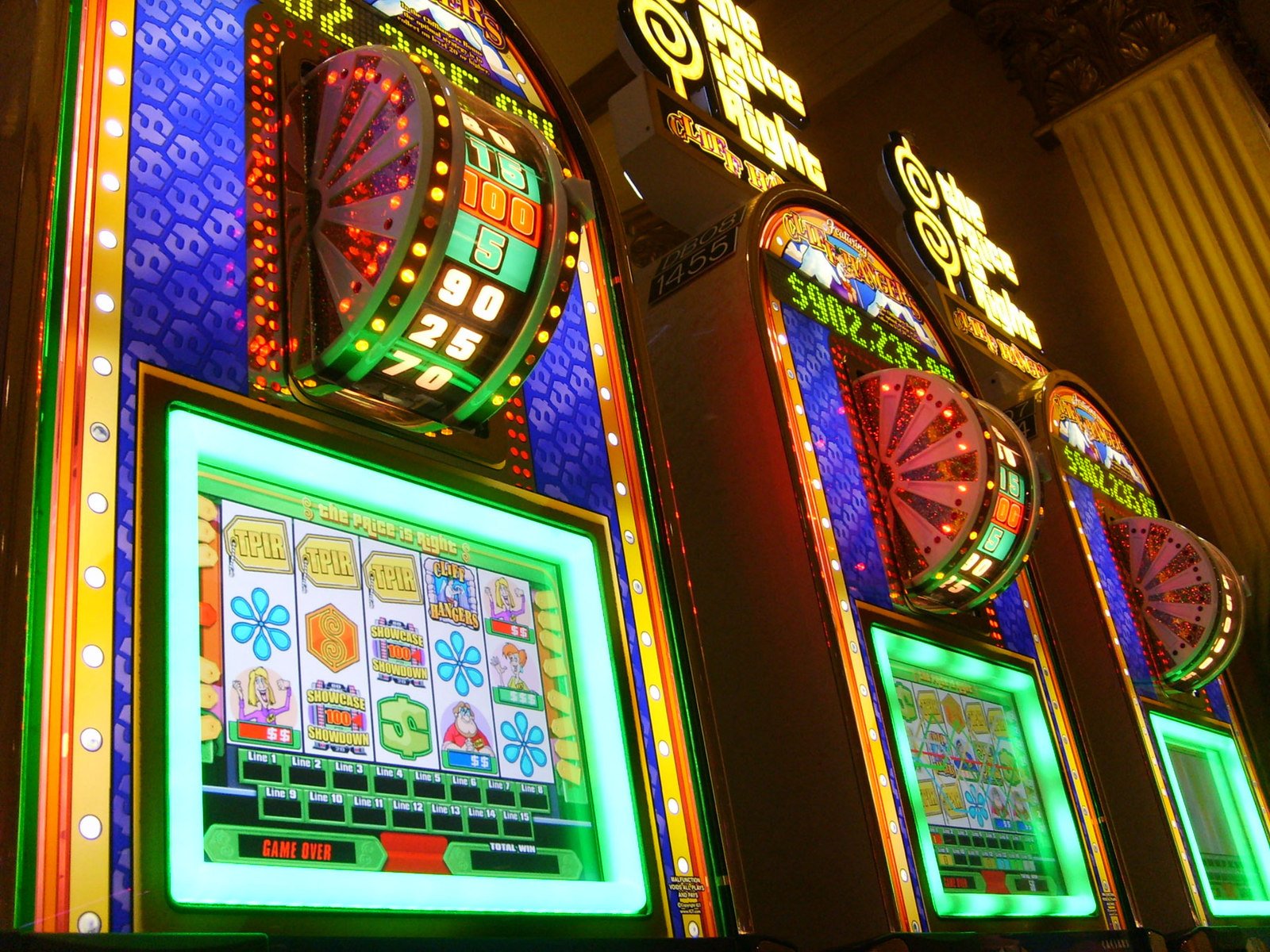
One newer development in slot machines is the incorporation of themes—movie, TV show, celebrity, song, history, fairy tale, fiction, other pop culture, and more. Early machines included “The Addams Family,” “Li’l Abner,” “The Lone Ranger,” and “Pac-Man.” Some recent market entrants feature James Bond, “Singin’ in the Rain,” “Knight Rider,” and “Buffy the Vampire Slayer.” Some themed slots even boast three-dimensional video.
“The manufacturers have been very creative in how they do [theming], through the use of bigger video screens and playing lots of video clips of whatever the show is and trying to tie in bonuses around themes from the show,” says Michael.
Interestingly, these devices are only available to casinos to lease—allowing the manufacturer to share the revenue they bring in. This is due to the high cost the makers pay to license the intellectual property along with the games’ complex designs.
Today’s typical slot machine features six-channel surround sound delivered through a comfy chair; impressive graphics displayed via high-definition screens (some as big as 84 inches); one of numerous themes; fun extras like bonuses and free spins; and with progressives, the potential for multi-million dollar payouts.
“It’s gotten to the point where most players don’t even understand what they’re playing. They just press a button and hope to be entertained. [Slots] have moved from being seen as a form of gambling to being seen as a form of entertainment,” Michael says.
Traditionally games of chance, some slot machines now include elements requiring video/arcade game-playing abilities. One—Danger Arena—resembles a slot machine but is equipped with a video-game like controller and involves the player shooting targets.
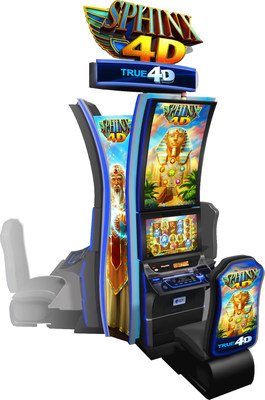
IGT’s Sphinx 4D game
The latest slot machines also offer four-dimensional graphics. Some, such as Sphinx 4D—made by Nevada’s International Game Technology—boast mid-air haptics technology, which means players can touch, feel, and manipulate graphic objects that appear in free space.
The Customer’s Always Right
Changing customer preferences and demand, which translate into casino profits, drive the evolution and fate of all games.
“Each generation likes to discover their own game and doesn’t like the game that their father or grandfather played,” Michael says. “Every game has a life span. If any game isn’t pulling its weight, it’s probably going to get voted off the casino floor.”
As for slots versus table games, the latter are going to make a comeback, predicts Michael. He expects the trend of casinos forfeiting table space for slot machines will reverse to the point where both are about evenly represented. However, he also expects traditional blackjack and craps tables to decrease slowly “in favor of new table games, new different ideas,” he said.
What specific games will become hits is anyone’s guess, as what the public will fancy at any given time is impossible to predict.
Michael sums it up like this: “If poker is the hot thing right now, and blackjack was the hot thing before poker, what’s going to be the next hot thing?”
———————————
Photo of Price is Right Slot Machines: From freeimages.com by Jacqueline Munoz
Photo of Sphinx 4D: From PRNewsFoto/IGT
